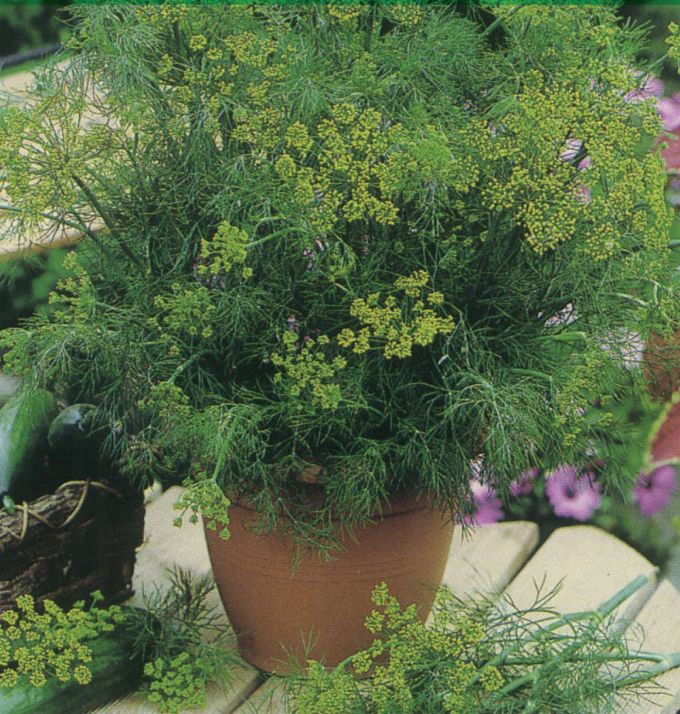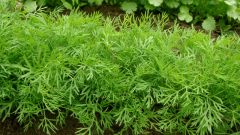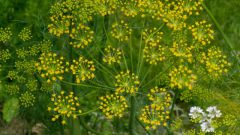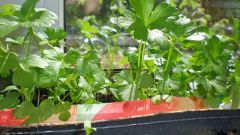You will need
- Fennel seeds
- Complex mineral fertilizer
- Fluorescent lamp
- Nutritious garden soil
- Soil for indoor plants with a neutral reaction.
Instruction
1
The selection of varieties.
Unlike tomatoes and cucumbers, there are special varieties of dill, intended for cultivation in the home. Visual varieties of dill differ little from each other. The main difference is the timing of maturation. On this basis the varieties are divided into early, middle and late. Early varieties are gaining the necessary green mass in a very short time – about 10 days earlier than late. But these varieties oblistvennye worse and very quickly pulled in the peduncle. Because fennel is grown primarily for the greens is a preference for late-ripening varieties, such as Kibray, Tetra. Among the late varieties last time, a dedicated group of Bush varieties, they are very well oblitey, from the axils of leaves and grows new shoots. Therefore, each plant looks like a Bush. This varieties grow very slowly and do not have time to ripen in the middle part of Russia, but they are well suited for growing on windowsills. If you manage to find seeds of varieties Russian size, fireworks, Gourmet, it will be the perfect choice.
Unlike tomatoes and cucumbers, there are special varieties of dill, intended for cultivation in the home. Visual varieties of dill differ little from each other. The main difference is the timing of maturation. On this basis the varieties are divided into early, middle and late. Early varieties are gaining the necessary green mass in a very short time – about 10 days earlier than late. But these varieties oblistvennye worse and very quickly pulled in the peduncle. Because fennel is grown primarily for the greens is a preference for late-ripening varieties, such as Kibray, Tetra. Among the late varieties last time, a dedicated group of Bush varieties, they are very well oblitey, from the axils of leaves and grows new shoots. Therefore, each plant looks like a Bush. This varieties grow very slowly and do not have time to ripen in the middle part of Russia, but they are well suited for growing on windowsills. If you manage to find seeds of varieties Russian size, fireworks, Gourmet, it will be the perfect choice.
2
Soil preparation
Dill growing in the open ground is not demanding to the composition of the soil, but for growing dill at home, you must carefully prepare the soil mixture. In autumn, prepare the ground for planting dill. It should be loose garden soil. Before planting, mix it with purchased soil for household plants with a neutral reaction. To make the fennel grows, he needs enough nutritional area. For the cultivation of late varieties of dill, the distance between plants should be at least 15 cm, and for Bush varieties even 30 cm.
Dill growing in the open ground is not demanding to the composition of the soil, but for growing dill at home, you must carefully prepare the soil mixture. In autumn, prepare the ground for planting dill. It should be loose garden soil. Before planting, mix it with purchased soil for household plants with a neutral reaction. To make the fennel grows, he needs enough nutritional area. For the cultivation of late varieties of dill, the distance between plants should be at least 15 cm, and for Bush varieties even 30 cm.
3
Preparation of seed.
To accelerate the germination of seeds and ensure high seed make sure to pre-sowing preparation of seeds of fennel. If you have the opportunity to use aquarium compressor, slide processing, which is called sparging. To do this, seeds are soaked for 18-20 hours in water through which oxygen is constantly circulated. The water temperature should not be below 20 degrees. The seeds are then sowed immediately. The second method is soaking seed in water for 2-3 days. The water is changed every 6-8 hours.
Prepared seeds are sown only in moist soil.
To accelerate the germination of seeds and ensure high seed make sure to pre-sowing preparation of seeds of fennel. If you have the opportunity to use aquarium compressor, slide processing, which is called sparging. To do this, seeds are soaked for 18-20 hours in water through which oxygen is constantly circulated. The water temperature should not be below 20 degrees. The seeds are then sowed immediately. The second method is soaking seed in water for 2-3 days. The water is changed every 6-8 hours.
Prepared seeds are sown only in moist soil.
4
Sowing.
Swipe in a well-moistened soil of the groove depth of about 1 cm Spill their water, without touching the edges of the grooves. At the bottom lay the prepared seeds. The earth from the edges sprinkle on the seeds. Thus, the seeds lie on the wet soil, and the soil on top is dry. This prevents the formation of a dense crust on the surface of the soil. Dill seeds should be sown at intervals of 2-3 weeks, then during the winter you will be provided with fresh greens
Swipe in a well-moistened soil of the groove depth of about 1 cm Spill their water, without touching the edges of the grooves. At the bottom lay the prepared seeds. The earth from the edges sprinkle on the seeds. Thus, the seeds lie on the wet soil, and the soil on top is dry. This prevents the formation of a dense crust on the surface of the soil. Dill seeds should be sown at intervals of 2-3 weeks, then during the winter you will be provided with fresh greens
5
Care
Dill grows very poorly when there is insufficient moisture germination. Particularly important to good watering during the germination of seeds and growth of young seedlings. Once in two weeks spend fertilizing complex fertilizers. This can be used, for example, fertilizer for indoor plants "rainbow". The ideal temperature for growing dill 18-20 degrees.
Dill grows very poorly when there is insufficient moisture germination. Particularly important to good watering during the germination of seeds and growth of young seedlings. Once in two weeks spend fertilizing complex fertilizers. This can be used, for example, fertilizer for indoor plants "rainbow". The ideal temperature for growing dill 18-20 degrees.
6
Supplementary lighting.
Dill is a very light demanding plant. In order to get a good harvest of greens, you will need to arrange additional lighting in the landings. For this purpose, the height of 50-60 cm install fluorescent lights, they can be the ordinary energy-saving lamps with white light. On the windowsill is enough to dosvechivat shoots for 5-6 hours in the morning. If pots with seedlings located at the back of the room dosvechivat you need at least 15-16 hours.
Dill is a very light demanding plant. In order to get a good harvest of greens, you will need to arrange additional lighting in the landings. For this purpose, the height of 50-60 cm install fluorescent lights, they can be the ordinary energy-saving lamps with white light. On the windowsill is enough to dosvechivat shoots for 5-6 hours in the morning. If pots with seedlings located at the back of the room dosvechivat you need at least 15-16 hours.



